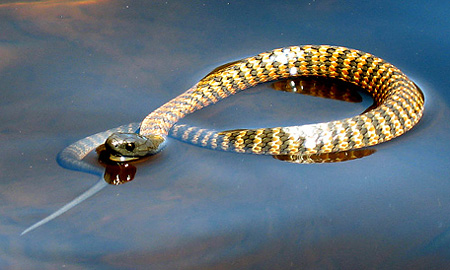Introduction
When it comes to poisonous serpents, Australia is home to some of one of the most interesting and hazardous types in the world. Amongst these, the Tiger Snake attracts attention not only for its potent poison yet likewise for its interesting habits. Comprehending the behavior of venomous snakes like the Tiger Snake is important for both wild animals enthusiasts and those living in areas where these snakes exist. This post looks into numerous facets of Tiger Snake habits, habitat, identification, precaution, and emergency treatment practices in case of a snake bite.
Understanding the Actions of Venomous Snakes Like the Tiger Snake
The Tiger Snake, medically called Notechis scutatus, is infamous for its hostile nature when threatened. These snakes show a variety of habits that can be rather various from their non-venomous equivalents.
Characteristics of Tiger Snakes
The Tiger Serpent is quickly recognizable because of its distinctive bands or stripes that appear like a tiger's markings. They can differ in color from yellowish-brown to dark olive or black. This pigmentation serves not just as snake bite first aid pdf camouflage but likewise as a warning signal to potential predators.
Adaptability to Environment
One impressive facet of their behavior is their versatility to numerous atmospheres. Found primarily in coastal regions, marshes, and marshes throughout Australia and Tasmania, they can flourish in varied habitats consisting of metropolitan locations.
Hunting Techniques
Tiger Serpents are ambush predators largely feeding on fish, frogs, and tiny mammals. They have keen vision and an intense feeling of smell which assists them in situating target effectively.
Venom Composition
Their venom consists of neurotoxins that influence the nervous system, causing paralysis or death in smaller sized animals. For human beings, prompt medical interest is important after a tiger snake bite as a result of its possibly deadly effects.
Natural Environment of Tiger Snakes
Preferred Locations
Understanding where these snakes reside sheds light on their behavioral patterns. The tiger snake habitat consists of:
- Coastal regions Swamps Grasslands Urban locations with plentiful water sources
Seasonal Movements
During warmer months, Tiger Snakes are more energetic as they indulge in sunshine or quest for food. On the other hand, cooler months see them pulling back into hibernation sites.
Are Tiger Snakes Venomous?
Yes! The inquiry "are tiger serpents venomous?" typically develops amongst those unfamiliar with this types. Their venom is taken into consideration among the deadliest amongst all serpent types worldwide.
Symptoms of a Tiger Serpent Bite
If bitten by a tiger snake, signs may consist of:
- Localized pain Swelling at the bite site Nausea and vomiting Sweating and confusion
Immediate clinical aid is critical as without treatment attacks can bring about extreme health problems and even death.
First Help for Serpent Bites: Quick Reaction Guide
Knowing just how to provide emergency treatment for a snake bite could conserve somebody's life. Right here's what you ought to do:
Step 1: Continue to be Calm
Keeping tranquility helps decrease heart price which reduces venom spread.
Step 2: Paralyze the Influenced Area
Keep the affected limb still and below heart degree if possible.
Step 3: Call Emergency Situation Services
Always look for professional clinical aid right away after a serpent bite.
First Help for Snake Bite Set Essentials
A well-equipped snake bite first aid kit should include:
- A compression bandage Antiseptic wipes A set of scissors A cold pack
Safety Preventative measures: Stopping Serpent Bites in Australia
Awareness Programs
Educating neighborhoods about regional serpent varieties and their habits can significantly decrease encounters causing bites.
Avoiding Hazardous Areas
Staying far from long grass throughout warmer months decreases call with snakes that might be resting or hunting.
Common Mistaken beliefs Regarding Tiger Snakes
Many individuals think misunderstandings about the actions of tiger snakes result in unneeded anxiety. Right here are some clarifications:
Myth 1: All Tigers Are Aggressive
Not all tiger serpents will display aggression if left undisturbed; lots of prefer fleeing as opposed to confrontation.
Myth 2: They Chase Humans
Tiger snakes do not proactively go after humans; they may strike when they really feel endangered yet will typically pull back if provided space.
Conservation Efforts Associated with Poisonous Snakes
Conservation efforts concentrate on informing neighborhoods about safeguarding regional wild animals while lessening human-snake interactions.
Importance of Ecosystems
Understanding that venomous snakes play a necessary role in preserving ecological balance aids foster recognition as opposed to concern towards them.
FAQs Concerning Tiger Snakes
What needs to I do if I encounter a tiger snake?- Maintain range and slowly back away without unexpected movements.
- While attacks aren't extremely usual as a result of recognition efforts, they still happen yearly within Australia.
- Baby tiger serpents can supply full dosages of poison despite being smaller sized; therefore caution is suggested around them.
- They mainly eat frogs, fish, little mammals like rats, and other reptiles.
- It's prohibited in the majority of jurisdictions without proper licensing as a result of safety issues concerning their venom.
- Wear durable boots and remain on significant routes; look prior to placing hands or feet into concealed spaces like rocks or logs.
Conclusion
Understanding the are blue bellied black snake venomous behavior of poisonous snakes like the Tiger Snake not only improves our expertise yet also promotes security recognition among those living near dugite venom effects their habitats. From acknowledging their qualities, comprehending emergency treatment protocols complying with a bite, through involving preservation efforts-- every element plays an important duty in fostering coexistence with these interesting reptiles while appreciating their place within our ecosystem.
As we grow our understanding via education and learning and experience, we add positively towards making sure both human security and wildlife conservation-- benefitting all parties involved!

